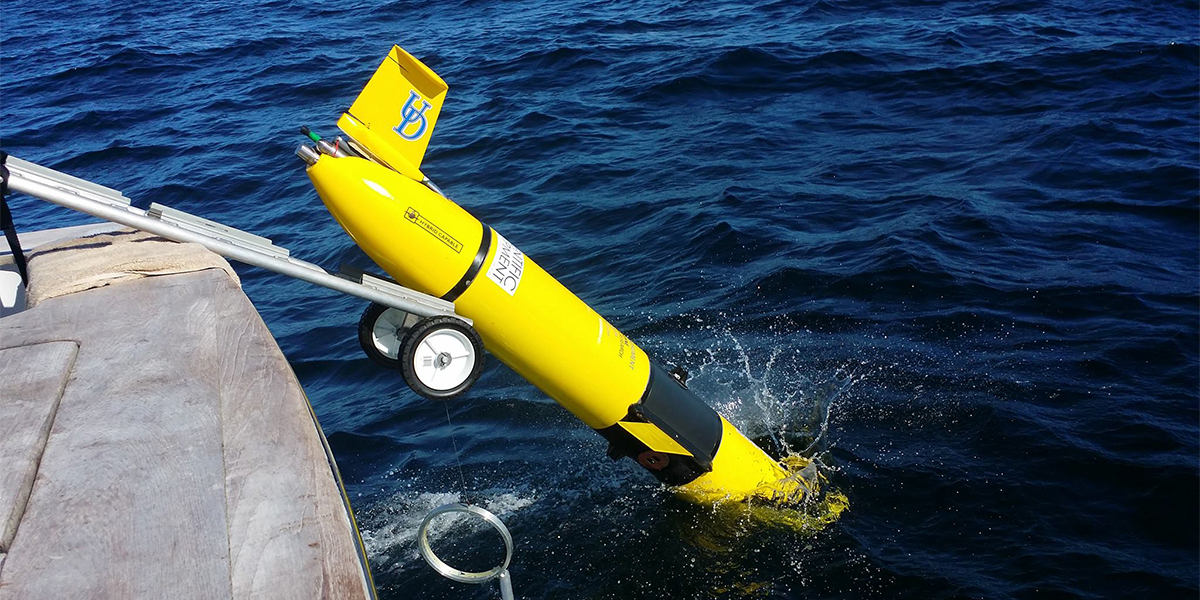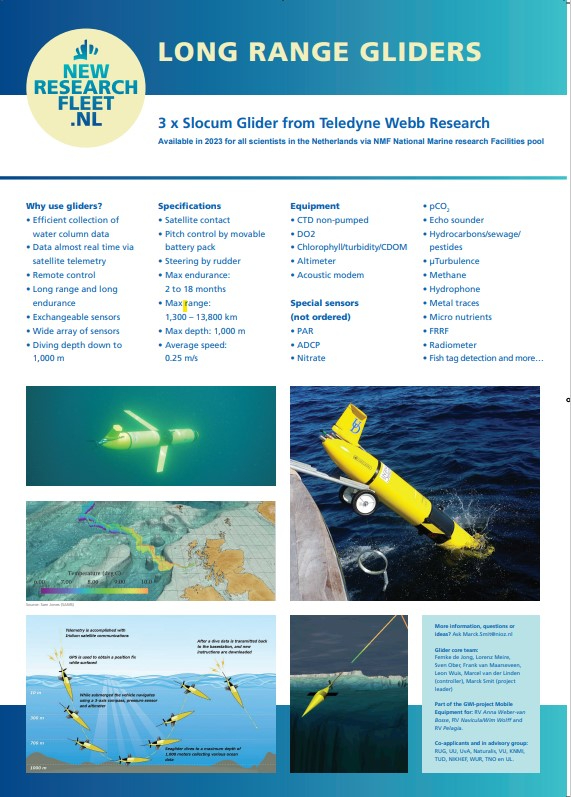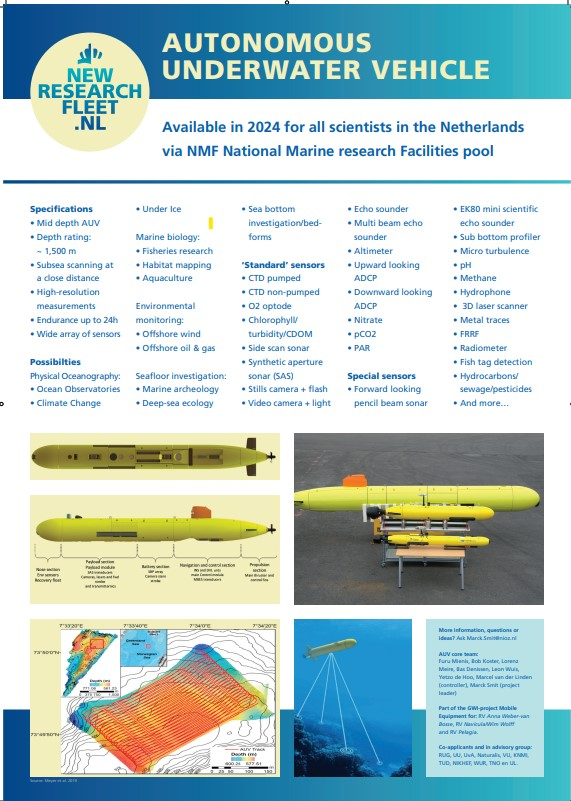Delivery of first undersea robots

Purchase of gliders
“The Slocum gliders have already been purchased from Teledyne Webb Research, and will be delivered by the end of the year”, Smit explains. “In early November, a team of scientists, electrical engineers and ship technicians will go to SOCIB on Mallorca for combined operational training, maintenance training and sea acceptance tests. Then we’ll start the first glider science project from the RV Pelagia in the North Sea in 2023. That will be for the Nose project, to study the absorption of CO2 in the North Sea.”
NIOZ scientist Femke de Jong adds: " With gliders you can map the properties of the water column for long periods of time, but unlike with an anchoring, you are not tied to 1 spot and you get the data directly in real time. With that, you can respond to what is happening at the time and send the glider somewhere where something interesting is happening or adjust the frequency of measurement" .
See the poster on the right for more information about the gliders.
AUV acquisition approaching
A tender procedure is currently underway to select the eventual supplier for the AUV. The plan is to start conducting research using the AUV in 2024. Furu Mienis sees a lot of new research opportunities: " With the AUV, we have ability to map parts of the deep sea floor very accurately while collecting environmental data. Because we can send the AUV down there, this provides a lot of opportunities to study inaccessible places in the deep sea in detail." She adds: "And in general, the gliders and AUV work autonomously and thus can collect data while other activities can be undertaken from the ship at the same time".
See the poster on the right for more information about the AUV.
ROV specifications
The ROV project team will also start work in the very near future. Together with the science community, they will elaborate the specifications for the tools, equipment and capabilities. One of the proposed tasks for the new ROV will include the experimental sea floor research, such as by Sabine Gollner. “Think about work where you would need your hands and eyes on land – in the deep sea such operations can only be done by robot arms and with the view through the robots’ video-camera. With a ROV we can for example perform high precision sampling of delicate animals, or can place and recover small scientific instruments and experiments on selected locations,” says Gollner.

